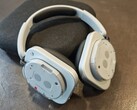Xiaomi has just launched rather unusual earphones, namely the Xiaomi Bone Conduction Earphones 2. Unlike typical speakers, these earphones do not use drivers that cause air to vibrate, thus transmitting sound using air as an intermediate medium. Instead, they use bone conduction technology, which transmits sound through the bones of the skull directly to the inner ear. In turn, this means they can be made sufficiently waterproof for use during swimming or any other kind of watersport.
Indeed, this appears to be the key feature of the Xiaomi Bone Conduction Headphones 2, namely the integration of a swimming mode. This is designed to enhance audio experience while swimming, supposedly ensuring clear sound quality underwater. Additionally, they are also said to have internal storage since connecting them to a smartphone while swimming is not really practical. A 165 mAh battery is installed, which is said to enable a battery life of up to 12 hours.
The Xiaomi Bone Conduction Earphones 2 are currently available in China in two colors (white and black) for an introductory price of around $97. Information on a global launch is still pending.
I have been active as a journalist for over 10 years, most of it in the field of technology. I worked for Tom’s Hardware and ComputerBase, among others, and have been working for Notebookcheck since 2017. My current focus is particularly on mini PCs and single-board computers such as the Raspberry Pi – so in other words, compact systems with a lot of potential. In addition, I have a soft spot for all kinds of wearables, especially smartwatches. My main profession is as a laboratory engineer, which is why neither scientific contexts nor the interpretation of complex measurements are foreign to me.
Translator: Jacob Fisher - Translator
- 1970 articles published on Notebookcheck since 2022
Growing up in regional Australia, I first became acquainted with computers in my early teens after a broken leg from a football (soccer) match temporarily condemned me to a predominately indoor lifestyle. Soon afterwards I was building my own systems. Now I live in Germany, having moved here in 2014, where I study philosophy and anthropology. I am particularly fascinated by how computer technology has fundamentally and dramatically reshaped human culture, and how it continues to do so.


























